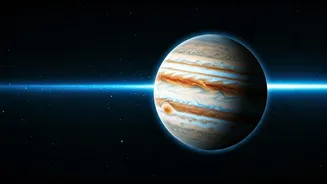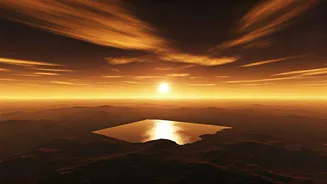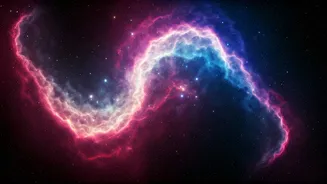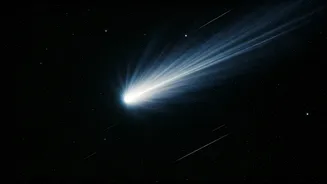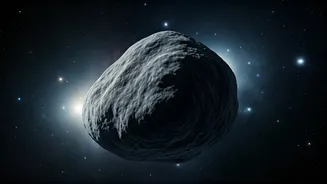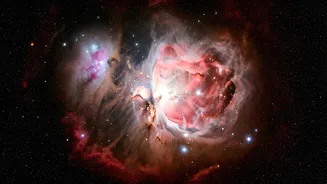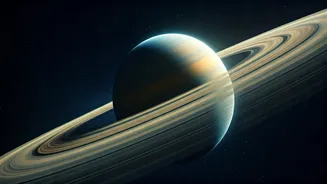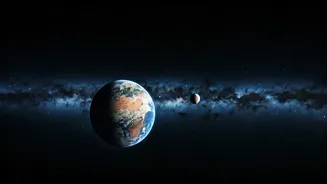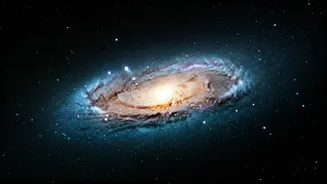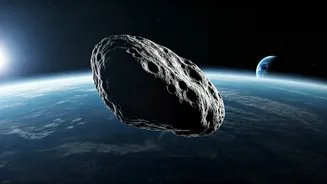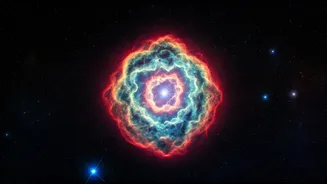Giants: Not So Simple
Giant planets, like Jupiter and Saturn, are fundamentally altering how astronomers perceive planetary systems. Traditionally, the formation of planets was
thought to follow a relatively predictable process. However, the discovery of exoplanets—planets orbiting stars other than our Sun—has completely upended this notion. Many of these exoplanets are gas giants, but unlike the giants within our own solar system, they often exhibit highly eccentric orbits. Some even travel extremely close to their stars, a phenomenon that challenges the prevailing theories about planetary formation. These unusual orbits suggest a more dynamic and chaotic environment than previously imagined. Moreover, the atmospheres of these giant planets are quite diverse. The atmospheric makeup and features vary considerably, which contributes to the mystery. The ongoing research into these strange exoplanets is crucial to develop a more comprehensive understanding of planetary formation and the conditions conducive to life beyond Earth.
Orbital Eccentricities: Surprises
One of the most surprising aspects of these giant planets is their orbital eccentricity. Orbital eccentricity is a measure of how much an orbit deviates from a perfect circle. While the giant planets in our solar system have relatively circular orbits, many exoplanets possess highly elongated ones. Some have eccentricities as high as 0.9, in sharp contrast to the near-circular orbits we observe closer to home. The existence of such extreme orbits suggests that these planets have undergone a complex and turbulent history. Scientists propose that gravitational interactions with other planets or passing stars might have caused the giant planets' orbits to become distorted over time. Alternatively, these planets might have formed in their highly eccentric orbits from the start. Both scenarios necessitate a reassessment of current planetary formation models. Further research is necessary to identify the mechanisms responsible for shaping the orbits of these distant gas giants and clarify how these processes might impact the likelihood of finding habitable planets elsewhere.
Atmospheric Oddities: Diverse
The atmospheres of these giant planets also present many perplexing features. The composition and structure of the atmospheres of exoplanets vary significantly, revealing a complexity that challenges our current understanding of atmospheric processes. Some planets have atmospheres rich in unusual elements, while others exhibit extreme temperature gradients. The presence of these elements indicates that planetary formation and evolution are incredibly varied. The presence of clouds, storms, and other weather phenomena varies across these planets. These atmospheric variations can inform us of the planet's history and its environmental conditions. Studying the atmospheres of these planets involves advanced techniques. Astronomers use telescopes to analyze the light that passes through the planet's atmosphere. This analysis provides information about its chemical composition, temperature, and pressure. These observations help scientists construct detailed models that explain the formation and evolution of these diverse atmospheres. Future research may help us better comprehend the processes that influence the atmospheres of these giant planets.
Revising Planetary Models
The discovery of these unusual giant planets is prompting astronomers to rewrite the rulebook on planetary formation and evolution. Traditional models, based largely on the study of our solar system, fail to fully account for the observed diversity of exoplanets. The unexpected eccentric orbits and complex atmospheric compositions of these giant planets indicate that planetary systems can form and evolve through various pathways. Some scientists are revising existing models to incorporate factors such as gravitational interactions, migration, and the influence of stellar environments. Others are developing entirely new models that consider the role of turbulence, magnetic fields, and other factors. These revised and new models aim to explain the full range of observed exoplanet characteristics. The models will also make predictions about the properties of exoplanets that have yet to be discovered. Understanding these giant planets can also help scientists assess the possibility of habitable worlds beyond our solar system. The ongoing quest to understand these planets will refine our understanding of the universe.
